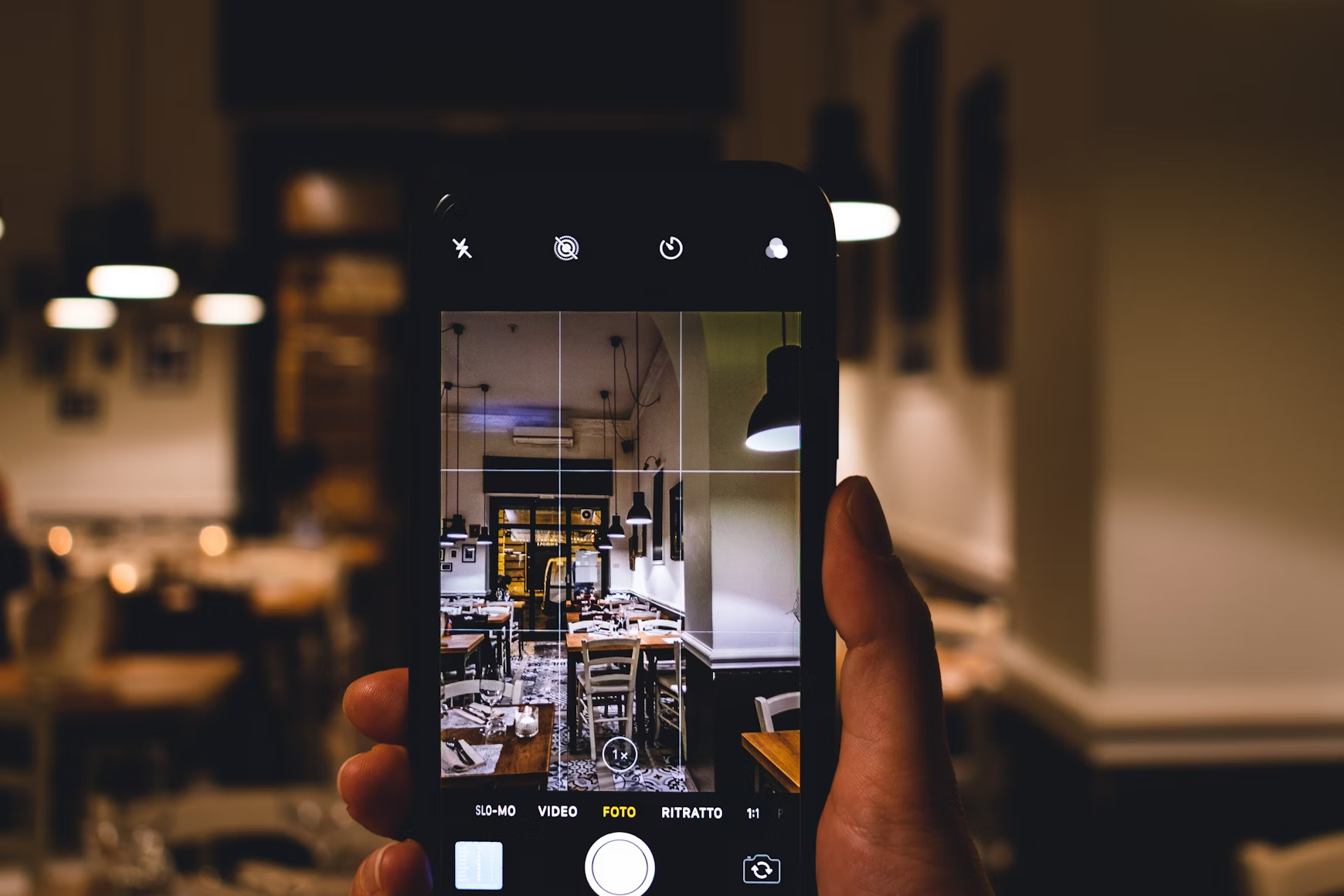It's Sunday night. Again.
You're scrambling to come up with something—anything—to post tomorrow. Your mind is blank. Your creativity is tapped out. And you're asking yourself for the hundredth time: "Why didn't I plan ahead?"
Sound familiar?
Here's the thing: the daily content grind is killing your creativity, draining your energy, and honestly, producing mediocre results.
But what if I told you that you could create an entire month's worth of high-quality content in just one weekend? No more daily panic. No more creative burnout. No more posting whatever you can throw together at the last minute.
Welcome to the art of content batching—the secret weapon of every successful creator who seems to effortlessly show up consistently across all platforms.
By the end of this guide, you'll have a proven system to batch create 30+ days of content in a single weekend, complete with templates, workflows, and strategies that actually work.
Let's turn you into a batching boss.
Why Content Batching is a Game-Changer
Before we dive into the "how," let's talk about why this matters.

The Cost of Daily Content Creation
Creating content on-the-fly every single day has hidden costs:
Mental Drain: Task-switching between creating content and everything else you need to do fragments your focus and exhausts your brain. Studies show it takes 23 minutes to refocus after switching tasks.
Inconsistent Quality: When you're scrambling daily, you're not producing your best work. You're just producing something.
Creative Burnout: Forcing creativity on demand, every single day, is exhausting. Eventually, you run out of ideas and motivation.
Time Waste: Ironically, creating content daily actually takes MORE time than batching. You're constantly starting from scratch, finding your groove, then stopping. It's inefficient.
The Benefits of Batching
When you batch your content creation, magic happens:
5X More Productive: Research shows that batch creating can lead to five times more content output while using 80% less time. One focused weekend beats 30 scattered mornings.
Better Quality: When you're in "creator mode" for an extended period, you hit a flow state. Your ideas get sharper. Your content gets better.
Consistent Posting: No more gaps in your posting schedule. No more "I'll post tomorrow." It's done. Scheduled. Automatic.
Mental Freedom: Once your content is batched and scheduled, you're free to focus on other parts of your business—or actually take a weekend off without guilt.
Strategic Thinking: Batching forces you to plan ahead, which means more cohesive messaging and better overall strategy.
Bottom line: batching is the difference between being a stressed-out content hamster on a wheel and being a strategic creator in control of your time.
The Weekend Batching Framework
Here's the reality: you can't just sit down and "create 30 days of content." You need a system. Here's the exact framework I use and teach to creators who want to batch like a boss.
The 5-Phase Batching Process
- Planning Phase (Friday evening - 2 hours)
- Content Creation Phase (Saturday - 6-8 hours)
- Repurposing Phase (Saturday evening - 2 hours)
- Design & Polish Phase (Sunday morning - 3-4 hours)
- Scheduling Phase (Sunday afternoon - 2 hours)
Total time investment: 15-18 hours over one weekend = 30+ days of content ready to go
Let's break down each phase.
Phase 1: Planning Phase (Friday Evening - 2 Hours)
The secret to successful batching is preparation. Skip this phase, and you'll waste hours on Saturday staring at a blank screen.

Step 1: Define Your Content Pillars (30 minutes)
Content pillars are the 3-5 core topics you consistently talk about. These keep your content focused and make planning infinitely easier.
Example content pillars for a fitness coach:
- Workout tips & form
- Nutrition & meal planning
- Mindset & motivation
- Client transformations
- Behind-the-scenes of my routine
Your turn: Write down 3-5 topics you want to be known for. These should align with your expertise and your audience's needs.
Step 2: Audit Your Best-Performing Content (20 minutes)
Look at your analytics from the past 3 months:
- Which posts got the most engagement?
- Which topics sparked conversations?
- What formats performed best (carousel, video, text post)?
- What questions do people ask you repeatedly?
Pro tip: Don't reinvent the wheel. Your audience is literally telling you what they want more of. Give it to them.
Step 3: Brain Dump Content Ideas (40 minutes)
Set a timer and brain dump every content idea that comes to mind. Don't filter. Don't judge. Just get ideas out.
Prompt categories to spark ideas:
- FAQs your audience asks
- Common mistakes in your niche
- Your personal stories/lessons learned
- Tips, hacks, and shortcuts
- Behind-the-scenes moments
- Industry trends or hot takes
- Product/service announcements
- Case studies or client wins
- Educational how-tos
- Motivational/inspirational messages
Goal: 50-100 raw ideas. Yes, really. You want more than you need so you can pick the best ones.
Step 4: Create Your Content Calendar (30 minutes)
Now organize those ideas into a simple calendar.
Recommended posting frequency:
- Instagram: 4-5 posts per week + 7 Stories per day
- LinkedIn: 3-4 posts per week
- TikTok: 4-7 short videos per week
- YouTube: 1-2 long videos per week
- Email Newsletter: 1 per week
- Blog: 1-2 per month
Choose your platforms based on where YOUR audience hangs out. Don't try to be everywhere.
Template for one month:
Week 1:
- Monday: Educational tip (Pillar 1)
- Wednesday: Personal story (Pillar 3)
- Friday: How-to tutorial (Pillar 2)
Week 2:
- Monday: Client transformation (Pillar 4)
- Wednesday: Behind-the-scenes (Pillar 5)
- Friday: Myth-busting post (Pillar 2)
[Continue pattern for weeks 3-4]
Pro tip: Theme your weeks. "Workout Week" followed by "Nutrition Week" creates natural content flow and makes batching easier.
By the end of Friday night, you should have:✅ Your 3-5 content pillars defined✅ 50-100 raw content ideas✅ A calendar with 30+ posts planned and assigned to dates
Phase 2: Content Creation Phase (Saturday - 6-8 Hours)
Saturday is your power day. Block it out. Protect it. Tell your family you're unavailable. This is where the magic happens.

The Batching Mindset: Group Similar Tasks
The key to batching is doing all similar tasks together. Don't create one post from start to finish. That's inefficient. Instead:
Bad approach: Write post → Design graphic → Film video → Edit video → Repeat 30 times
Good approach: Write all captions → Then design all graphics → Then film all videos → Then edit all videos
Grouping similar tasks keeps you in the same mental mode, which is exponentially faster.
Saturday Morning: Core Content Creation (3-4 hours)
Start with your "anchor content"—the biggest, most valuable piece you'll create this month.
What is anchor content?Your anchor content is a substantial piece that can be repurposed into multiple smaller pieces. This is the content multiplication strategy.
Examples of anchor content:
- One long-form YouTube video (10-20 minutes)
- One in-depth blog post (1,500-2,500 words)
- One podcast episode (30-45 minutes)
- One comprehensive carousel (10-15 slides)
The 1-to-15 Rule: One piece of anchor content can become 15+ pieces of micro-content across platforms.
Here's how one 15-minute YouTube video becomes 15+ content pieces:
- YouTube video (main anchor)
- Blog post from video transcript
- Email newsletter summarizing key points
- 3-5 Instagram Reels (pull best clips)
- 3-5 TikToks (same clips, platform-optimized)
- 3-5 YouTube Shorts (same clips)
- LinkedIn carousel (key points as slides)
- Instagram carousel (same carousel, adapted)
- Twitter thread (breaking down main takeaways)
- Instagram Stories (teasing the full video)
- Pinterest pins (linking back to blog)
- Quote graphics (pull best one-liners)
- Audiogram clips for Stories
- Behind-the-scenes Story of creating the video
- Thumbnail becomes standalone post with caption
See the power? One solid piece of work multiplies into two weeks of content across every platform.
Action step: Create 2-3 anchor pieces this morning. For example:
- One YouTube video + one blog post
- Or three long-form Instagram carousels
- Or two podcast episodes
Saturday Afternoon: Write All Captions (2-3 hours)
Now that you have your anchor content, it's time to write captions for the next 30 days.
Caption-writing batching strategy:
Step 1: Create a simple template for each content type
EDUCATIONAL POST TEMPLATE:
Hook: [Surprising fact or question]
Body: [3-5 key points]
CTA: [What action do you want them to take?]
STORY POST TEMPLATE:
Hook: [Personal moment]
Lesson: [What you learned]
Takeaway: [How they can apply it]
CTA: [Engagement question]
Step 2: Write rough drafts for all posts
Don't aim for perfection. Just get the core message down. You can polish later.
Productivity hack: Use AI tools like ChatGPT to help with first drafts:
"I'm a [your role] helping [your audience] with [your expertise]. Turn this video transcript into an engaging Instagram caption with a hook, 3 key takeaways, and a question at the end. Keep it conversational and under 200 words."
Then edit to add your unique voice and style.
Step 3: Add calls-to-action (CTAs)
Every post needs a CTA:
- "Save this for later"
- "Tag someone who needs to see this"
- "Comment 'YES' if you relate"
- "Share your experience below"
- "Grab my free guide in bio"
CTAs drive engagement, which boosts your reach.
Saturday Evening: Film All Videos (1-2 hours)

If your strategy includes video content (Reels, TikToks, YouTube Shorts), batch film them all at once.
Video batching tips:
Create a filming setup once: Set up your ring light, phone mount, and background. Film everything before you break it down.
Wear 2-3 outfit changes: This makes videos look like they were filmed on different days (even though they weren't).
Film in one location with different angles: Switch camera angles to create variety.
Record B-roll footage in bulk: Get 20-30 clips of you typing, walking, drinking coffee, working. You'll use these to cover jump cuts and add visual interest.
Batch by content type:
- Film all talking-head videos together
- Then film all action/tutorial videos
- Then film all B-roll
- Then film all behind-the-scenes snippets
Pro tip: Over-film. Shoot 50 clips even if you only need 30. Some won't work out, and having extras is better than reshooting.
Phase 3: Repurposing Phase (Saturday Evening - 2 Hours)
Now comes the content multiplication magic: repurposing.
The Repurposing Checklist
For each piece of anchor content, systematically repurpose it:
If you created a YouTube video:☐ Extract transcript for blog post☐ Clip 3-5 shorts for Reels/TikTok/Shorts☐ Create carousel with key points for Instagram/LinkedIn☐ Write Twitter thread summarizing main ideas☐ Design quote graphics from best soundbites☐ Create audiogram clips for Stories☐ Write email newsletter featuring the video☐ Create Pinterest pins linking to blog
If you wrote a blog post:☐ Turn intro into a LinkedIn post☐ Turn each section into separate Instagram posts☐ Create carousel visualizing the main points☐ Record yourself reading it for podcast/video☐ Pull best quotes for social graphics☐ Create email newsletter excerpt☐ Design infographic summarizing key points
If you recorded a podcast:☐ Transcribe for blog post☐ Create audiogram clips for social☐ Pull quotes for graphics☐ Turn into LinkedIn article☐ Create carousel with episode highlights☐ Film video clips discussing main points
Tools to Speed Up Repurposing
Video editing & clipping:
- Descript: Edit video by editing text transcript (game-changer)
- CapCut: Free, powerful video editing
- Vizard.ai: Auto-clips long videos into short-form content
- OpusClip: AI-powered video repurposing
Transcription:
- Descript: Video/audio transcription and editing
- Otter.ai: Real-time transcription
- Temi: Affordable transcription ($0.10/minute)
Design:
- Canva: Templates for everything (use batch create feature)
- Adobe Express: Quick graphics and videos
- Figma: Design system for consistent branding
Repurposing automation:
- Lumen5: Turns blog posts into videos automatically
- Missinglettr: Auto-creates social campaigns from blog posts
The goal of Saturday evening: Have your anchor content broken down into 20-30 pieces of micro-content in raw form (unedited videos, rough captions, draft graphics).
Phase 4: Design & Polish Phase (Sunday Morning - 3-4 Hours)
Sunday morning is for making everything look good and sound great.
Polish Your Written Content (1 hour)
Go through all your captions and:
- Tighten up the language (cut unnecessary words)
- Add personality and your unique voice
- Check for typos and grammar
- Ensure CTAs are clear and compelling
- Add relevant emojis (but don't overdo it)
- Format for easy reading (line breaks, bullet points)
Pro tip: Read captions out loud. If they sound weird spoken, they'll sound weird in people's heads.
Design All Graphics (2-3 hours)
Now create all your visual content in one batch.
Batching design workflow:
Step 1: Open Canva and select templatesChoose 3-5 template styles you'll rotate through the month (for consistency but with variety)
Step 2: Batch create text posts
- Add all your captions to their respective templates
- Adjust sizing and placement
- Keep branding consistent (colors, fonts, logo placement)
Pro tip: Use Canva's "Batch Create" feature—upload a CSV with your text, and it automatically creates all designs. Massive time-saver.
Step 3: Edit photos
- Apply same filter/preset to all photos for cohesive aesthetic
- Crop for different platform specs (1:1 for Instagram feed, 9:16 for Stories)
Step 4: Create carousels
- Design all slides for each carousel
- Ensure consistent design system across slides
- Include page numbers and swipe prompts
Step 5: Edit videos
- Add captions (essential for accessibility and for sound-off viewing)
- Add b-roll to cover cuts
- Add text overlays for key points
- Add transitions and simple effects
- Export in platform-specific dimensions
Batch editing hack: Save your most-used effects, transitions, and caption styles as presets. Apply to all videos with one click.
Quality Check (30 minutes)
Before moving to scheduling, do a final quality check:
Review checklist:☐ All captions are error-free☐ All graphics are on-brand☐ All videos have captions☐ All CTAs are clear☐ All files are properly named and organized☐ Platform-specific sizes are correct
Phase 5: Scheduling Phase (Sunday Afternoon - 2 Hours)
The final step: get everything scheduled so you can forget about it for the next month.
Choosing Your Scheduling Tools
All-in-one platforms (schedule everything from one place):
- Later: Great for visual content, supports IG, TikTok, LinkedIn, Pinterest, YouTube, Facebook
- Buffer: Clean interface, supports most platforms
- Hootsuite: Robust features for teams
- Plann: Fantastic for Instagram-first creators
- RecurPost: Great for evergreen content that recycles
Platform-specific tools:
- Meta Business Suite: For Instagram and Facebook
- TikTok Creative Center: Native TikTok scheduling
- YouTube Studio: Native YouTube scheduling
- LinkedIn: Native scheduling available
Email & blog:
- ConvertKit: Email scheduling
- Mailchimp: Email marketing platform
- WordPress: Blog post scheduling
The Scheduling Strategy
Best times to post (based on 2025 research):
Instagram:
- Monday-Friday: 11 AM, 1-2 PM
- Wednesday: 11 AM (highest engagement)
LinkedIn:
- Tuesday-Thursday: 9-11 AM, 12 PM
- Wednesday: 9 AM (peak)
TikTok:
- Tuesday-Thursday: 7-9 AM, 7-11 PM
- Friday: 5 AM
Facebook:
- Monday, Wednesday, Friday: 1-3 PM
- Thursday: 1-2 PM
Important: These are starting points. Monitor your analytics and adjust based on when YOUR audience is most active.
Scheduling Best Practices

Spread content throughout the week: Don't post everything on Monday. Distribute strategically.
Plan for flexibility: Leave 20% of your slots open for timely content, trending topics, or spontaneous posts.
Schedule Stories separately: Many platforms don't allow Story scheduling, so set daily reminders to post those.
Create a content dashboard: Use a simple spreadsheet or Notion database tracking:
- Date & time
- Platform
- Content type
- Topic/pillar
- Status (scheduled/posted)
- Link to post
- Performance notes (add these later)
Set up your first post to review: Schedule the first few pieces, then review how they look on each platform before scheduling the rest.
The Sunday Wind-Down (30 minutes)
Congratulations! You just created 30 days of content in one weekend. Before you close your laptop:
Final checklist:☐ All content is scheduled☐ Calendar is updated☐ Dashboard is current☐ Backup copies of all assets saved☐ First week's content double-checked
Celebrate your win: Seriously. You just gave yourself an entire month of creative freedom. That's huge.
The Content Batching Calendar Template
Here's a plug-and-play calendar for one month of content (adjust based on your platforms and frequency):
Week 1: Education Week
Monday: Educational carousel (Pillar 1)Tuesday: Quick tip ReelWednesday: Myth-busting post (Pillar 2)Thursday: Tutorial videoFriday: Resource roundup
Week 2: Story Week
Monday: Personal story post (Pillar 3)Tuesday: Lesson-learned ReelWednesday: Behind-the-scenes post (Pillar 5)Thursday: Vulnerable moment StoryFriday: Transformation post
Week 3: Engagement Week
Monday: Question post (Pillar 1)Tuesday: Poll or quiz in StoriesWednesday: User-generated content featureThursday: "This or that" ReelFriday: Q&A session
Week 4: Value Week
Monday: In-depth tutorial (Pillar 2)Tuesday: Client success story (Pillar 4)Wednesday: Free resource/lead magnet promotionThursday: Industry insight postFriday: Week recap + motivational message
Sprinkle throughout:
- Daily Stories (minimum 3-5)
- 1-2 weekly TikToks repurposed from Reels
- 1 weekly LinkedIn thought leadership post
- 1 weekly email newsletter
- 1 monthly blog post
Advanced Batching Strategies
Once you've mastered the basics, level up with these advanced techniques:
Strategy 1: The Quarterly Mega-Batch
Instead of batching monthly, batch an entire quarter:
- One long weekend per quarter
- Create all anchor content (12-15 pieces)
- Repurpose into 90 days of micro-content
- Only need to do this 4 times per year
Benefits: Even more time freedom, better long-term strategy, seasonal planning
Challenges: Requires more upfront time, harder to stay spontaneous, needs more storage
Strategy 2: The Evergreen Library
Create a library of 50-100 evergreen posts that never expire, then:
- Use scheduling tools with content recycling (like RecurPost)
- Set posts to automatically recycle every 3-6 months
- Mix evergreen content with fresh content (80/20 split)
Benefits: Content that works for you 24/7, less frequent batching needed
Perfect for: Educational content, tips, quotes, how-tos
Strategy 3: The Theme Month Approach
Plan entire months around one theme:
- January: Goal-setting month
- February: Love your audience month
- March: Spring cleaning/fresh starts month
Then batch all content around that singular theme. Makes planning and creating exponentially easier.
Strategy 4: The Repurposing Flywheel
Create a system where content automatically feeds into the next format:
- Record long-form podcast/video
- Auto-transcribe to blog post
- Blog post auto-generates social posts
- Videos auto-clip into shorts
- Best-performing shorts become ads
Tools like Descript, Opus Clip, and AI writing assistants make this mostly automated.
Common Batching Mistakes (And How to Avoid Them)
Mistake 1: Batching Without Strategy
Creating 30 posts about random topics isn't batching—it's just scattered content done in bulk.
Solution: Always start with your content pillars and strategic goals. Every piece should serve a purpose.
Mistake 2: Perfectionism Paralysis
Trying to make every post perfect prevents you from finishing the batch.
Solution: Aim for "good enough" during batching. You can always improve posts later. Consistency beats perfection.
Mistake 3: No Room for Spontaneity
Scheduling everything leaves no space for trending topics, timely news, or spontaneous inspiration.
Solution: Leave 20-30% of your schedule flexible. Batch your foundation, stay spontaneous with the rest.
Mistake 4: Ignoring Analytics
Batching the same content types that aren't working is wasted effort.
Solution: Before each batch session, review what performed best last month. Double down on what works.
Mistake 5: Forgetting to Engage
Scheduled content is useless if you're not actively engaging with your audience.
Solution: Schedule time daily to respond to comments, DMs, and engage with other creators. Posting isn't enough.
Mistake 6: Platform Mismatch
Posting the exact same content across all platforms without adapting for each platform's culture.
Solution: Repurpose strategically. LinkedIn wants professional insights. TikTok wants quick entertainment. Instagram wants aesthetic + value.
Mistake 7: Burnout Batching
Trying to create too much in one session leads to burnout and mediocre content.
Solution: Take breaks. Batch in focused 90-minute sprints with 15-minute breaks. Your creativity will thank you.
Your Batching Toolkit: Essential Resources
Must-Have Tools
Planning & Organization:
- Notion: All-in-one workspace for content planning
- Trello: Visual content calendar
- Google Sheets: Simple content tracking
- Airtable: Database for content management
Content Creation:
- Canva Pro: Design everything
- Descript: Video editing via text
- CapCut: Free video editing
- Grammarly: Writing polish
Repurposing:
- Opus Clip: AI video clipping
- Repurpose.io: Auto-repurpose across platforms
- Lumen5: Blog-to-video transformation
Scheduling:
- Later: Multi-platform scheduling
- Buffer: Clean, simple scheduling
- Meta Business Suite: Instagram + Facebook
- RecurPost: Evergreen content recycling
AI Assistants:
- ChatGPT: Caption writing, ideation
- Jasper: Marketing copy
- Copy.ai: Social media content
Free Templates & Resources
Caption templates: Save swipe files of high-performing captions to reference
Design templates: Create a Canva template folder with your go-to designs
Video hooks: Document 20-30 hook formulas that work for your niche
Content idea bank: Keep a running list in your notes app whenever inspiration strikes
Making Batching a Sustainable Habit
One successful batch session is great. Making batching your default system is transformative.
Monthly Batching Rhythm
Last weekend of each month:
- Friday: Review analytics + plan next month
- Saturday: Create + repurpose
- Sunday: Design + schedule
Mid-month check-in:
- Review what's performing
- Adjust remaining content if needed
- Engage with audience feedback
The Post-Batch Workflow
After your content is scheduled:
Week 1: Monitor performance, engage activelyWeek 2: Light engagement, focus on other business tasksWeek 3: Analyze top performers, note what to create more ofWeek 4: Pre-plan next batch
Building Your Batching Support System
Accountability: Find a batching buddy. Schedule parallel batching sessions over Zoom.
Outsourcing: As you grow, consider outsourcing:
- Video editing
- Graphic design
- Caption writing
- Scheduling
You create the strategy and anchor content; they handle the repetitive tasks.
Team collaboration: If you have a team, use tools like:
- Notion for content planning
- Frame.io for video reviews
- Asana for task management
- Slack for communication
The Bottom Line
Creating 30 days of content in one weekend isn't a dream—it's a documented, repeatable system that thousands of successful creators use.
Here's what you need to remember:
✅ Batching saves massive time: One focused weekend > 30 scattered mornings
✅ Quality improves: Flow state = better content
✅ Consistency becomes effortless: Schedule it once, post automatically
✅ Strategic thinking emerges: Planning ahead creates cohesive messaging
✅ Creative freedom multiplies: Your month is handled, now focus on growth
The creators who seem to "effortlessly" show up everywhere aren't more talented or disciplined than you. They're just batching.
Your next step: Block out this coming weekend on your calendar. Commit to your first batch session. Use this guide. Follow the framework. Create your 30 days.
Then watch what happens when you're no longer consumed by daily content creation and can actually focus on building your business, serving your audience, and growing your brand.
Welcome to the batching life. You're going to love it here.
Ready to Share Your Batched Content?
SuperProfile makes it incredibly easy to convert your content into income. While you're batching your social content, don't forget to batch your monetization strategy too:
Batch create your digital products:
- Turn your best content into ebooks or guides
- Package your knowledge into mini-courses
- Create template bundles from your designs
- Offer coaching based on your expertise
With SuperProfile, you can:
- Sell digital products directly from your link-in-bio
- Offer one-on-one coaching with built-in scheduling
- Host paid workshops and webinars
- Create a membership community
- Share free lead magnets to grow your email list
No complicated tech. No multiple tools. Just one link that does it all.
Start your free SuperProfile →
Ready to batch like a boss? Save this guide and tag a creator friend who needs to see this. Then go block out your weekend—you've got content to create.






.svg)
.png)



